2019 Hyundai Kona Electric review, road test
The Kona Electric sure looks interesting. But does it have the real-world performance and range to be considered as an alternative to conventional combustion engine cars?
Published on Sep 29, 2019 10:00:00 AM
1,18,998 Views
Follow us on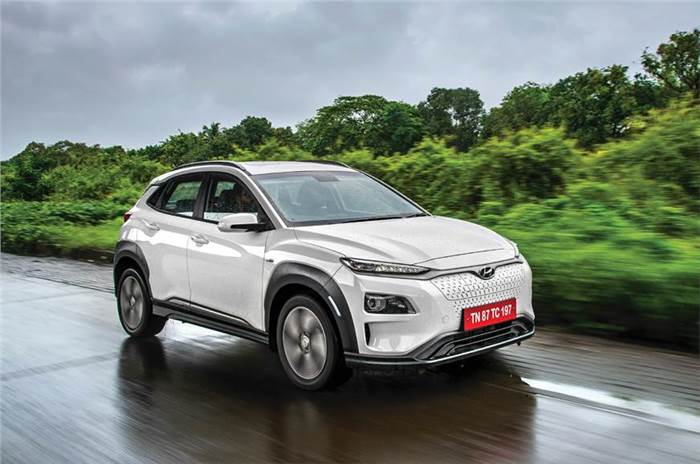
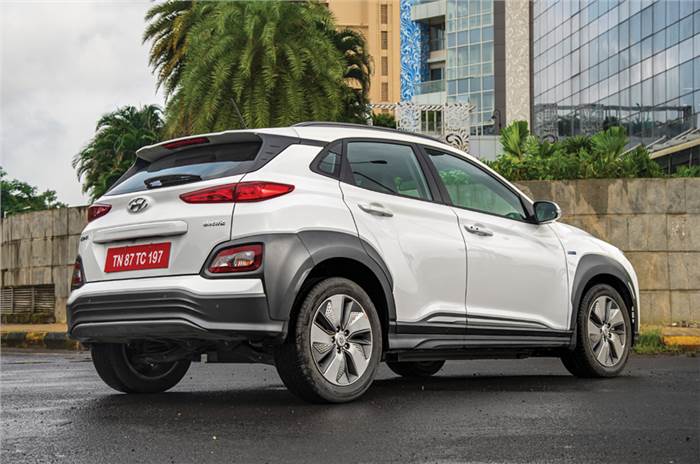
Rear windscreen isn’t very big, which limits the rear visibility.

Sunroof is small but helps bring in some light to make the all-black cabin feel airy.
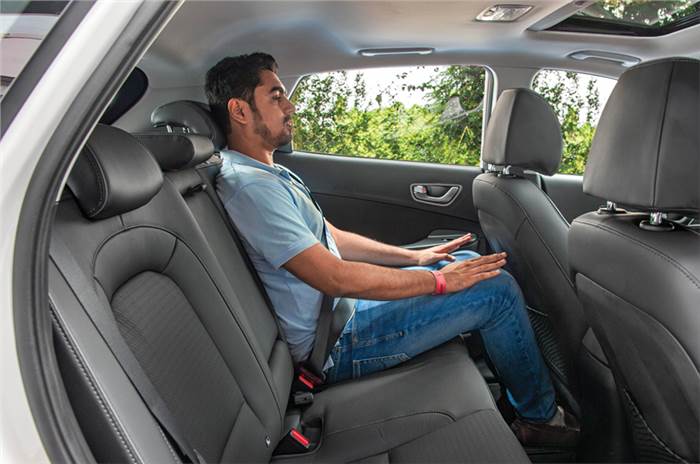
Legroom and headroom are limited. Under-thigh support isn’t great either.
Hyundai India calls the Kona an SUV, but going by the proportions and the design, this is more a crossover than a full-fledged SUV. Even when you compare the dimensions, the Kona is just a size bigger than the i20 Active. Creta-sized, it isn’t. However, at 1,800mm, it is quite wide and has a longer wheelbase too. The 17-inch alloy wheels complete the picture and feel proportionate to the car’s size.
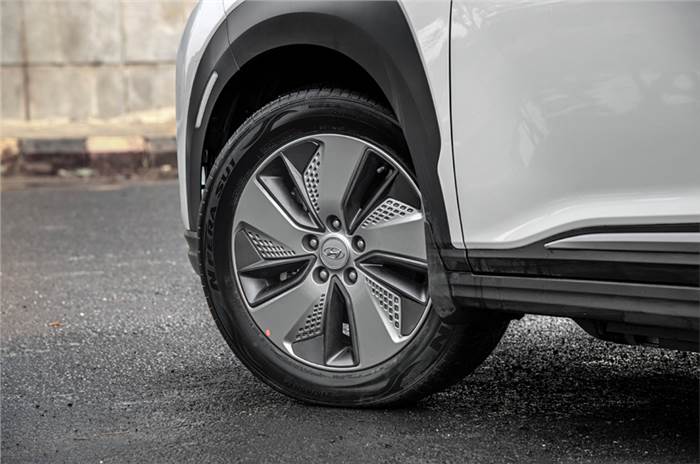
The Kona doesn’t disappoint when it comes to defining itself as a futuristic vehicle. Up front, you have slim LED daytime running lights, below which are the bi-functional LED projector headlights. Further, you have a sealed grille that helps channel the air in a better way, giving the Kona EV an overall drag coefficient of 0.29. The grille also carries the CCS Type 2 charging port, so you can conveniently park head-on into the charging area parking slot. This plastic ‘grille’ is poorly constructed, though, and feels cheap. In profile, you can see a lot of body cladding over the flared wheel arches, especially in the rear, which add to the Kona’s off-roader look. The slim LED tail-lamps mimic the look of the front DRLs and sit atop the big reversing light.
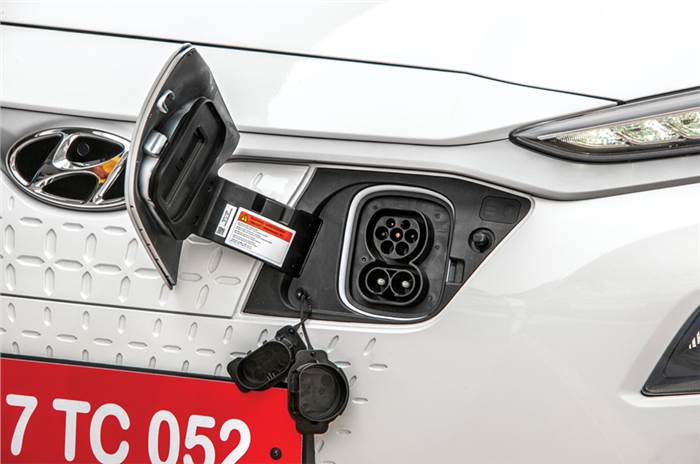
The Kona Electric sits on a heavily modified version of the combustion-engine Kona’s platform, and gets MacPherson strut-type suspension up front and a sophisticated multi-link at the rear. Although the Kona EV has not been crash-tested by the Global NCAP, the regular Kona did receive a 5-star safety rating at the Euro NCAP. The electric version uses advanced high-strength steel. While there is no engine, gearbox or fuel tank, the 39.2kWh, liquid-cooled, lithium-ion polymer battery pack sits on the floor – between the four wheels as well as under the rear seat – and added precautions are taken to ensure that there is minimum damage to it in case of a crash. The high-voltage battery is made up of 90 cells wired in series to provide a voltage output of 327V, and it is connected to the motor by high-voltage orange cables.
Up front sits the 136hp, permanent-magnet synchronous motor that converts electric energy into the mechanical energy used to turn the wheels. How does it work? Simple, when current flows through the windings in the motor, it generates a magnetic field which, in turn, rotates the rotor and generates torque. This torque is transferred to the wheels through a single-speed reduction gearbox.

If you peek under the bonnet you will see an on-board charger (OBC) and an electric power control unit (EPCU) mounted on top of the electric motor. The on-board charger converts the external alternating current (AC) from your home power supply (wall charger) to direct current (DC) in order to charge the high-voltage battery placed under the floor. An inverter (a part of the EPCU) is responsible for converting the DC supply from the battery to AC and sending it to the electric motor, which generates torque to move the vehicle forward. Also, while decelerating, the electric motor actually spins in reverse and the otherwise wasted kinetic energy (created while slowing down mechanical energy) is converted into electrical energy. A separate 12V battery is used to power the Kona EV’s standard electronics, like infotainment, cabin lights and more.
Copyright (c) Autocar India. All rights reserved.


















Comments
Member Login
Personal Details
No comments yet. Be the first to comment.